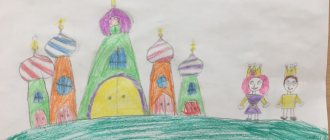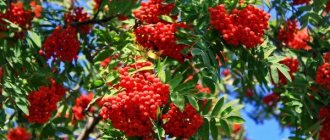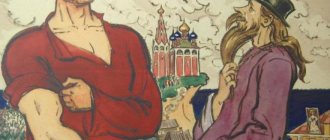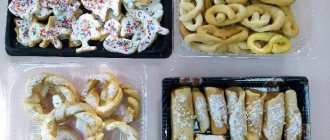Project on the topic: “Travel to cities of the world” for 4th grade.
Project goal: Develop a travel route to cities around the world.
Select cities with the most interesting sights. Prepare a presentation on the subject “The World Around You”, write a report or message. Mark the route on a geographical map. Tell schoolchildren about the work done, answer questions, defend the project. Project plan:
- Introduction
- Novosibirsk
- Saint Petersburg
- NY
- Hamburg
- Rome
- Athens
- Conclusion
- Example of a finished presentation
Vladivostok: the sea gate of Russia
Vladivostok: the sea gate of Russia
True, today the Far East is not only yarangas, but also real modern megacities. Let's say Vladivostok. This settlement is called the “sea gate of Russia” . Vladivostok was marked on maps in 1860. There is even a column that talks about this. It also has a model of the sailing ship Manchu. This is a Russian ship that dropped anchor in these lands for the first time. Then it was the Golden Horn Bay.
Naturally, residents of Vladivostok consider the sea to be their direct breadwinner. It is there that ships sail for fishing. Small fishing boats and huge vessels supply local people and other compatriots with seafood.
Report to the project:
I would start my journey with the cities that arose in modern times.
Novosibirsk
It appeared at the beginning of the 20th century, and can be classified as a city of modern times. Novosibirsk is a large city with a population of 1.6 million people. The most famous sights of Novosibirsk are the oceanarium, the opera and ballet theater, the local history museum, and the arboretum.
From Novosibirsk you can go to St. Petersburg.
Saint Petersburg.
It was founded by Peter the Great in 1703, that is, at the beginning of the 18th century. This is one of the most beautiful cities in Russia and the whole world. It has many unique palaces, cathedrals, and drawbridges across the Neva.
The most important sights of the northern capital are the Peter and Paul Fortress and the Winter Palace. Any guide will tell you about them in detail.
NY.
Now we will go overseas and visit New York.
It is one of the largest metropolitan areas in the United States, which lies on numerous islands off the east coast of America. The largest and most famous of them is Manhattan Island, the historical center of New York. The symbol of the metropolis is the wonderful Statue of Liberty.
New York was founded in the early 17th century, in 1624, by English settlers.
Hamburg.
Let's return to Western Europe.
Hamburg was founded in 810. This is one of the most beautiful metropolises in Germany, with many theaters, churches and palaces. Hamburg is a seaport and in the Middle Ages it was one of the centers of European trade.
Rome.
The eternal city of Rome is located in Italy. It was founded in the 8th century BC. It is a monument city that houses the famous Colosseum and St. Paul's Cathedral.
The central part of Rome is occupied by the Vatican, a region-state in which the residence of the Pope, the head of all Catholics, is located. In the square in front of the Vatican is the most famous fountain in Europe - Trevi.
Athens.
We will end our journey into the past in Athens
Historians still do not know the exact time when it was founded.
They name the date – 7th millennium BC. Athens is one of the oldest cities on the entire planet. And he is very handsome. In the center of Athens, on a hill, lies the Acropolis, an ancient temple complex topped by the ruins of the famous Parthenon. Photos of these monuments will decorate any album.
Conclusion:
There are a variety of cities in the world, very ancient and very young. Each of them has its own history, attractions and is beautiful in its own way. Each one contains people who love their hometown and are proud of it. There is so much beauty and wonder in the world!
Project “Travel to countries” project on the surrounding world (senior group)
ECD for education of tolerance for children of senior preschool age “Inhabitants of Planet Earth”.
Goal: Formation of the foundations of a tolerant culture of the personality of a preschooler.
Tasks:
educational:
- to form in children a cognitive interest in the history of other peoples of the world, races, their homes, their cultures;
- introduce the concept of “tolerance”;
educational:
— cultivate tolerance and respect towards representatives of other nationalities and races, regardless of social origin;
- a friendly attitude towards the traditions and customs of people of other nationalities;
— positive emotions in the process of introducing children to the culture of the peoples of the world;
- emotional interest in listening to poetry, expressing your emotions.
developing:
- develop an understanding of planet Earth and the life of people on the planet, the ability to find the distinctive features of people living in different countries and parts of the world;
- development of communication abilities as the main feature of a person with a tolerant consciousness.
Preliminary work: individual work with children: learning poems; working with children using a map and a globe; looking at paintings, illustrations, watching films about the life of people on our planet, learning folk outdoor games.
Material and equipment:
-multimedia projector;
-presentations: “China”, “Africa”, “Russia”;
-globe;
- map;
— audio recording of the song “Friendship”;
— cartoons: “Katerok”, “Peoples of Russia”, “We live in Russia. Tatars."
Educational areas:
“Cognition”, “Socialization”, “Communication”, “Fiction”, “Music”.
NODE PROGRESS: The teacher leads the children to the center of the hall, forming a circle.
"Solar Circle".
- Let's look at the guests and smile at them with our kindest smile.
-Now let’s close our eyes, hold hands and, without lowering our hands, stretch them forward to the center of the circle. Imagine that each of you is a warm ray of sunshine. You feel the same warm rays next to you. Open your eyes. We have accumulated a lot of heat, and we are ready to share it with the whole world. Because we are all together – a big bright sun! We are bound by strong friendship, and no clouds can separate us!
-Now we can give up, but strength and friendship will remain with us.
There is one planet - a garden in this cold space. Only here the forests are noisy, calling migrating birds. Only here do lilies of the valley bloom in the green grass, and only here do dragonflies look into the river in surprise. Take care of your planet - After all, there is no other like it!
Educator: Guys, what planet do you think the poet Yakov Akim wrote about so beautifully?
Children: The poem talks about our planet Earth.
Educator: Let's look at the model of the Earth, what is it called?
Children: Globe.
Educator: Well done! Guys, looking at the globe, tell us about our planet. What does the color blue (water) mean on the globe? These are seas and oceans. Who wants to show oceans and seas on the globe? (showing by children). What color is the land? (green and brown). Green indicates vegetation on our planet, and brown indicates mountains and plains.
Educator: What conclusion can be drawn?
Children: There is very little land suitable for life on the planet. We must protect nature and live in peace.
Educator: Where else can you see an image of our planet?
Children: On the map.
Educator: Let's look at the political map. The map is painted in different colors to indicate the countries. How many countries do you think there are on the globe? Children's guesses
Educator: There are 258 countries on our planet. Each country has its own main city, flag, anthem, customs, and national language. What is the name of the main city of the country?
Children: Capital.
Educator: Name the capital of our Motherland.
Children: Moscow.
Educator: Who can show our country on the map? What is it called?
Children: Russia
Educator: Think and tell me what distinguishes all the people living on our planet?
Children: Skin color, they speak different languages, they have different customs and traditions...
Educator: All people are different, but what unites us, what do we have in common?
Children: We have arms and legs, we live on the same planet, in cities, countries, we go to kindergarten, we do the same things.
Educator: We will find out what else unites us with the help of a simple game “Applause.” I will name a certain quality. Those who have it stand up from their seats, and everyone else applauds them. If everyone stands up, then we will all applaud.
- Stand up, all those who can read, - like to ride on carousels, - likes to watch cartoons, - likes ice cream, - likes to play, - dreams of flying into space, - loves animals, - stand up, those who love to dance, - stand up, all of you who knows how to make friends.
Educator:
Guys, tell me, which country is the best in the whole world? (children's answers) Why do you think so? (children's answers)
What do you think is the best country for children and adults who live in Italy, Belarus, etc.?
Why do you think so? (children's answers)
That's right, all people love and are proud of their homeland, their customs, traditions and achievements.
Educator:
— How many of you have heard the word “tolerance”?
- Do you know what it means? (listen to opinion)
Translated from French, it means an attitude in which it is accepted that others may think or act differently than oneself.
In English - willingness to be tolerant, condescension.
And in Russian - the ability to tolerate something or someone, to be self-possessed, hardy, persistent, to be able to put up with the existence of something, someone, to take into account the opinions of others, to be lenient.
Educator: And now we will listen to how you understand this new word:
Child 1.
Tolerance means this, If everyone lives together. And our hearts are warmed by the warmth, Sadik, our life and comfort.
Child 2.
Recognition, equality and respect, Interaction, friendship, chivalry. Any faith without coercion, this and much is tolerance.
Child 4.
Feel, think, love like others, Knowing how to understand solidarity in your heart, Completely discard - “They are not like that”, This is what tolerance teaches us.
Educator: That is, to be tolerant means to be attentive to others and pay attention to what brings us together, to respect others, regardless of differences.
Educator: And the following qualities will help us become tolerant: Mutual understanding, Mutual respect, Responsibility, Goodwill, Restraint, Compliance, Tolerance, Kindness.
Educator: Guys, let’s remember the fairy tale “The Flower of Seven Flowers” by V.P. Kataeva.
What was the girl's name?
Who did Zhenya meet?
What color was the last petal and wish? (Blue, so that Vitya is healthy)
How did the fairy tale end?
Doing good deeds is always nice. When you do good deeds, remember that goodness will come back to you! If you had such a seven-flowered flower in your hands, what wish would you make? One, the most, most cherished.
It’s not at all easy to be kind,
Kindness does not depend on height.
Kindness brings people joy
And in return it does not require a reward.
-Guys, tell me who you see on the slide? (Flower Fairy)
What do you think she loves most in the world? (flowers)
— That's right, flowers. She has a lot of different, beautiful ones, but among them there is also a magical one. This is a four-flowered flower. With its help, you can find yourself in any corner of the Earth. You just need to tear off the petal and say the magic words:
“Flowers are blooming in the flower garden, let’s play with them”
(children say magic words, the teacher tears a petal from a magic flower, children close their eyes and spin around).
Slide No. 1 with a picture of China. - What country do you think we find ourselves in? (China) How did you guess? (by eye shape, national hairstyle and clothing)
Slide number 2. - Right. Sophia will tell us about this country.
Slide number 3. "Nihao!" - this is how the greeting sounds in Chinese. Residents of China - the Chinese bow as a sign of greeting with their arms extended along their bodies.
Try saying hello too.
Yu translates as “friend”, you are my friends.
Slide number 4. China has its own anthem, flag and coat of arms.
Slide No. 5,6,7. There are high beautiful mountains, unusual multi-tiered temples and houses.
Slide number 8. In China, much attention is paid to the national costume.
Slide number 9. Dresses are made from silk fabric; silk was invented in China.
Slide number 10. Hieroglyphs are special beautiful and complex signs that are used instead of words that are familiar to us. Each hieroglyph has its own meaning. For example: one horizontal line is a person, and if you draw two horizontal lines, you get the word sky.
Slide number 11. The Chinese devote a lot of time to their health and take care of their body. When they get tired at work, they do special “Wushu” gymnastics.
I invite everyone to Chinese gymnastics.
(Chinese meditation music plays)
- First we will greet the sun. We raise the handles up, lower them and repeat again.
- We connect our palms above our heads, raise our legs, and keep our balance.
- People in China love tea, so we turn into teapots. We pour tea into cups, pour some more, and now into another cup and again.
- We'll have some hot tea.
- Slowly raise our hands up, bend sharply, say “ha”
Let's say goodbye in Chinese. “Zai-jian!” - this is how the Chinese say goodbye to each other (children repeat.)
Educator: Now let’s say to Sophia in Chinese: se-se (thank you).
- It’s time for us guys to fly on. We tear off another petal and remember the magic words... (children stand in a circle and say magic words)
Slide No. 1 with a picture of Africa.
- How many of you know where children with dark skin color live? (in Africa)
Slide number 2. Guys, Africa is a continent. The map is painted in different colors, which means there are many countries in Africa.
-Elvira will introduce us to the inhabitants of Africa.
Slide number 3. -We don’t know the language of the peoples of Africa, so we’ll say hello without words. Some tribes greet each other with their noses. Like this.
Now we greet you in African style.
Slide number 4. Why do people in Africa have such dark skin? (hot)
Slides No. 5,6. -It’s really very hot in Africa, and people’s clothes are therefore light. Africans complement their outfits with decorations made of bones, beads, shells or feathers.
Slides No. 7,8,9. This is what the home of the indigenous people of Africa looks like.
Slide No. 10,11. African children, like all children on planet Earth, love to play.
Slide number 12. Just like we love animals and nature.
Slide number 13. They go to school.
Slide number 14. But most of all, African children love to dance.
- Let's see how the heroes of one cartoon do it and dance with them.
(showing an excerpt from the cartoon “Katerok”, dance “Chunga-changa”)
- Well, guys, we also met residents of hot countries. The people of African countries do not live as richly as we do, but they still love and are proud of their countries, customs, and traditions.
- How many petals do we have left, we remember the magic words and tear off the petal again...
Slide No. 1 - What country do you think we find ourselves in? (Russia) How did you guess?
-Let’s ask Ilyusya to tell us about our country.
-Our Motherland is very large, beautiful and rich. Russia is a huge country.
Slide number 3. There are many nationalities in Russia, but they are all one people. In Russia, many centuries ago, a tradition of friendship and warm attitude towards the culture and traditions of neighboring peoples developed.
And the main thing is that one of the important traditions of the peoples of Russia is centuries-old FRIENDSHIP. I suggest you watch the cartoon “Peoples of Russia”.
Slide No. 4. Tatars, that is, we are a very ancient people with our own history. The most important thing for the Tatars was respect for nature, since they were engaged in agriculture.
Watch the video “We live in Russia.”
Slide number 5. Birch is a symbol of Russia. How beautiful it is at different times of the year! Straight, slender, white-trunked. Let's start a round dance "Birch". I invite everyone. Children
We have the last petal, but we need to return home.
- Let's say the magic words...
(the teacher tears off the petal, the children spin around and return to their kindergarten)
- And these are the children of our kindergarten. They are very friendly and love to play, dance, and can count and read. They are very friendly. Are you friendly? To prove how friendly you are, let's complete the task. This envelope contains cards with numbers from 1 to 13. They need to be laid out in the correct sequence from 1 to 13. And then we can read something very important.
Children perform the task to the music. Turning the numbers over, it turns out TOLERANCE.
-And in this envelope there are cards with numbers from 1 to 10. They also need to be laid out in the correct sequence from 1 to 10. And then we can read something else important.
Children perform the task to the music. Turning the numbers over, it turned out PEACE AND FRIENDSHIP - why are these important words?
— Are you really friendly guys?
Will it be important to you what skin color or eye shape the person who wants to play with you has?
-What is important for friendship? (kindness, responsiveness, attention to others).
- Indeed, we are so different - adults and children of the Earth: we speak different languages, live in different houses, dress differently. You are still children, but you will become adults. And peace and happiness on our planet will depend on you, on whether you have learned to be friends since childhood.
Educator: You and I had a wonderful time today. What did you enjoy most today?
(we got acquainted with a new word and concept - tolerance, got acquainted with some countries and their people, danced).
The main wonder of the world is man. Do you want to touch him? Then we will stand in a circle, look into each other’s eyes and say beautiful words: “Hello, man”!
And what kind of person is this, choose for yourself: kind, smart, brave, handsome, good, cheerful, generous, interesting, magnificent, hardworking, cheerful, funny, inventive, cool, loved, well-mannered, inquisitive, curious, sweet, fashionable, observant, wise , charming.
The children leave to the song “On the Big Planet.”
“Precious Belt” of Russia: the main center of the country
of Murmansk also made its contribution to the battles of the war . And with him - Suzdal, Vladimir, Ryazan, Dmitrov, Serpukhov and many others. The coat of arms of Suzdal represents a crowned falcon. Based on the decoration of the headdress, it belongs to the grand ducal class. But the city of Vladimir is associated with a golden lion in a crown. The animal clutches a silver cross in its paw.
By the way, both of these cities used to be the main centers. That's why the symbolism is like this. In the city of Vladimir there is a very beautiful church building of the Intercession on the Nerl . She is reflected in the water like a white swan. This is the cradle of ancient Russian architecture.
Pokrov on the Nerl
Let's move on to Tula with its famous samovars and gingerbread products. It is on this land that Yasnaya Polyana stands, where the great writer Leo Tolstoy lived. Read on.
Siberia - the journey through Russia continues: high mountains, incredible beauty
Siberia - the journey through Russia continues.
We move on. Next up is a unique corner of Russia, inhabited by Yakuts, Buryats, Khakassians, Nenets, Altaians, Tuvans, etc. Outwardly, these people are somewhat similar to the Chukchi - although, of course, this is a rough comparison. The journey continues - high mountain ranges and incredible beauty - this is Siberia . This is where the highest rock peaks are in the entire country. The widest and deepest rivers flow here.
You've probably heard about the Caspian Lake and Baikal ? That's where they are. Writers and romantics call these bodies of water the “blue eyes” of Russia . However, Baikal also has another name - sacred lake. For a long time, local residents have treated him as a kind of deity: they ask him for advice, they worship him. Of course, this behavior led to the emergence of many beliefs, myths and legends.
By the way, if you, while in Siberia, throw a pebble into Lake Baikal (just for fun), be prepared that the locals will scold you for it. Or at least they will make a remark. After all, they are very sensitive to this body of water and try not to disturb the water unnecessarily.
Rough mountain peaks and fast rivers of Russia: this is all the North Caucasus
Northern Caucasus
These territories have long attracted romantics and travelers. The harsh mountain ranges and fast rivers of Russia - all this is the North Caucasus.
- People have come and come here for inspiration, as well as for mineral waters. They are capable of healing a person.
- Main cities: Nazran, Grozny, Vladikavkaz, etc. By the way, Grozny is a city of military exploits.
- Chechnya is also a kind of pearl of our land.
- In general, more than 30 peoples live in the Caucasus, each of which is incredibly original.
Our little cruise has come to an end. Of course, each of us has our own favorite corner of Russia. Which one do you like best? You can name it. Or, if you know something new and interesting, tell us more about your favorite region of Russia. We hope that now you have no doubts about why we should love and respect our native land. Russia is a very rich country. It is great and multinational. No country in the world has such a large amount of resources and talents as our vast Motherland.
Ural: the splendor of Russia and beautiful gems
The Urals: the splendor of Russia
Next comes another beautiful location - the Urals . The mountain range stretches for 3000 km. But they are no longer so tall. It is the Ural Mountains that are the border of the West Siberian and East European Plains. The Urals have long been famous for their stones. There are beautiful gems here. Rumor has it that malachite can be found among the rocks. It's a fabulous place - and not just because of the sparkling cut.
Ural: beautiful gems
By the way, writer P.P. Bazhov, who describes such splendor of Russia and the wealth of the Urals in his works “Silver Hoof” and “Mistress of the Copper Mountain,” comes from Yekaterinburg. There is also a house-museum of the greatest composer P.I. Tchaikovsky. After all, he was born in Votkinsk.
House-Museum of the great composer P.I. Tchaikovsky
But the Urals are not only the land of jewelers, but also the land of metallurgists. The first enterprises appeared here approximately three hundred years ago. During the Great Patriotic War, it was the Urals who were the best suppliers of military equipment: tanks, aircraft, artillery pieces.
Ural craftsmen are known throughout the world. Also here is Orenburg, whose symbol is a down scarf. Everyone also knows the cities: Zlatoust, Chelyabinsk, Ufa, Yekaterinburg.
What is interesting about the south of Russia?
South of Russia
It's time to remember the Don and Kuban. What is interesting about the south of Russia?
- Naturally, I remember the guards of the local borders - the Cossacks.
- They lived and live on the banks of these rivers.
- By the way, when a boy was born to the Cossacks, the father and grandfather “celebrated” this with a volley of gunfire. This meant that a new warrior had seen the light.
- Rostov-on-Don, Stavropol, Krasnodar, Sochi, Anapa - everyone has probably heard about these cities.
- It is worth noting the Crimean expanses, steppes and seashores - incredible beauty, beaches and a lot of sun.
Novorossiysk is one of the most famous ports. There is a memorial “Malaya Zemlya”, reminiscent of the exploits of the townspeople during the war.
The waters of the Volga carry us further across Russia: the journey through the North continues
Church of the Transfiguration
The beauty of the Russian North cannot be ignored. The waters of the Volga carry us further across Russia, the journey through the North continues. Since ancient times, people have nicknamed the Volga River “Mother” and treated it with incredible respect. You could say that the river fed the common people. After all, it was on its banks that entire settlements were actively built. People built houses and monasteries. Over time, villages transformed into entire cities. In addition to the Russians, the following nationalities live on the banks of the Volga:
- Karelians
- Komi
- Vepsians
- Izhora et al.
Carpentry is actively developed. The Church of the Transfiguration is one of the most notable cultural monuments. It is located in Lake Onega, on the island of Kizhi. It would seem like an ordinary old house! But the point is that the church was made without a single nail!
Arkhangelsk was created by Ivan the Terrible. It was he who ordered the creation of a port on the banks of the Northern Dvina. This happened at the end of the 16th century. By the way, for a long time this city was the main port - until St. Petersburg appeared. Another fun fact: both the river and the city have the same name - Vologda. By the way, Vologda saw the light of day at the same time as Moscow. There is also a Kremlin there, and also St. Sophia Cathedral .
Saint Sophia Cathedral
We move on to the city of Pskov. It is called the younger brother of Novgorod. It is not far from this city that there is the village of Mikhailovskoye, which we know about from the biography of the great Russian poet, A.S. Pushkin. But Volgograd several centuries ago was called Tsaritsyn. This is because there is a river here called Tsarina. During the Second World War there were fierce battles here. This is evidenced by the Mamayevsky Kurgan with the Motherland monument .
Mamayevsky Kurgan with the Motherland monument







